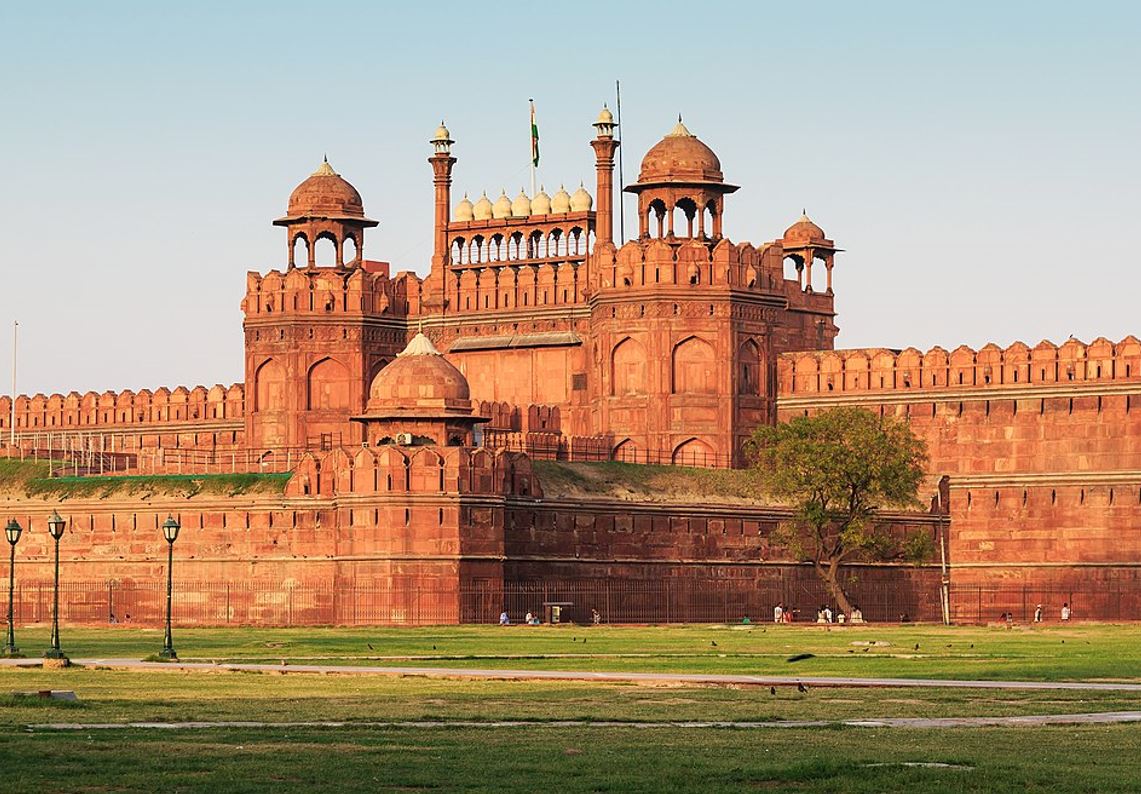This type of Islamic architecture emerged on the Indian subcontinent and was exclusively commissioned by Muslim dynasties of the Mughal Empire in the 16th, 17th, and 18th centuries.
Mughal Architecture is defined by bulbous onion domes, slender minarets that were usually placed on the corners, and magnificent ornamentation.
The style is a remarkable combination of Persian and Hindu architecture that uses the core elements that can be found in Islamic buildings.
Mughal buildings usually feature large spaces as well, including immense halls and courtyards that are surrounded by sumptuous and lush gardens (although some have deteriorated significantly over the centuries).
In this article, you’ll discover some of the most notable feats of Mughal architecture in the world.
1. Taj Mahal
The Taj Mahal is the epitome of Mughal architecture, and that’s many because it features everything that defines this beautiful architectural style. This UNESCO World Heritage site was voted as one of the New 7 Wonders of the World, and there are plenty of reasons for it.
It was commissioned by the Mughal emperor Shah Jahan to serve as the Mausoleum for his deceased wife Mumtaz Mahal. He did whatever he could to honor his favorite wife who died while giving birth to her 14th child. It’s estimated that the ruler spent the equivalent of over $1 billion on this project between 1631 and 1653.

2. Tomb of Jahangir
The Tomb of Jahangir is another 17th-century mausoleum that was constructed for the Mughal Emperor with the same name. Even though it features most elements that define Mughal architecture, it lacks a crucial feature which is the beautiful domes that dominate most Mughal buildings.
This is because the emperor forbade this element to be added to his tomb. Because of this, the minarets are placed on all 4 corners of a building that has a huge flat roof. The beauty of this structure lies in the elaborately ornamented interior that features marble and incredible frescoes.
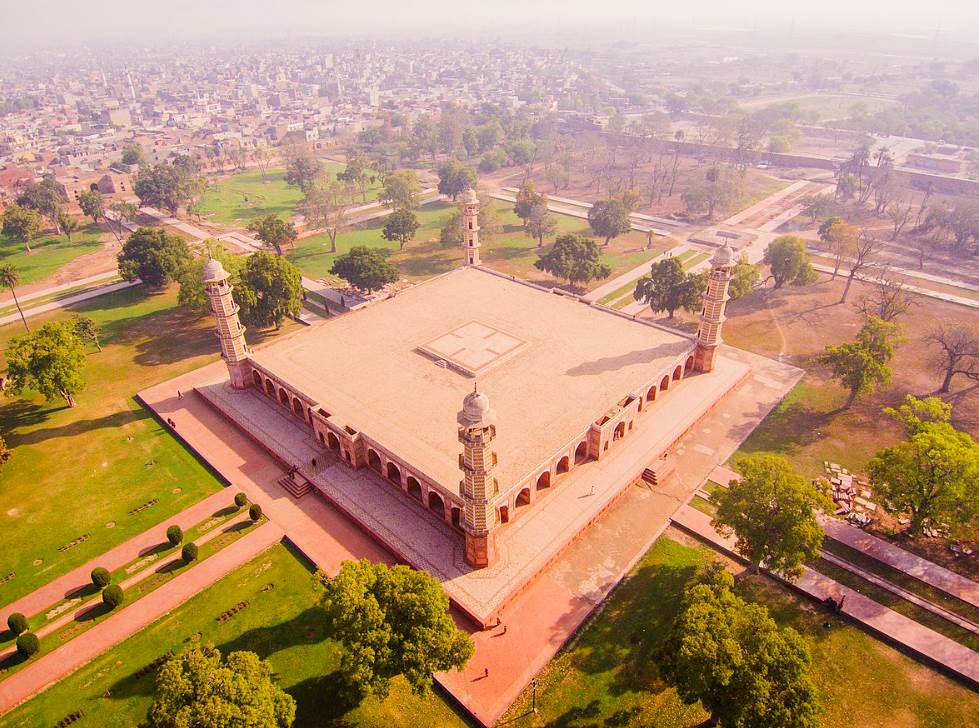
3. Hawa Mahal
Hawa Mahal is a famous palace that is located in the Indian city of Jaipur. It’s one of the more recent Mughal buildings on this list because it was only completed in 1799 by Maharaja Sawai Pratap Singh, the grandson of the founder of Jaipur. It’s therefore not a building that merely features Mughal elements.
The building incorporates a unique blend of Hindu Rajput Architecture and Islamic Mughal Architecture and is world-famous for its beautiful pyramidal-shaped façade. This element features dozens of windows through which the ladies of the palace could watch festivities below (as they were not allowed to mingle).
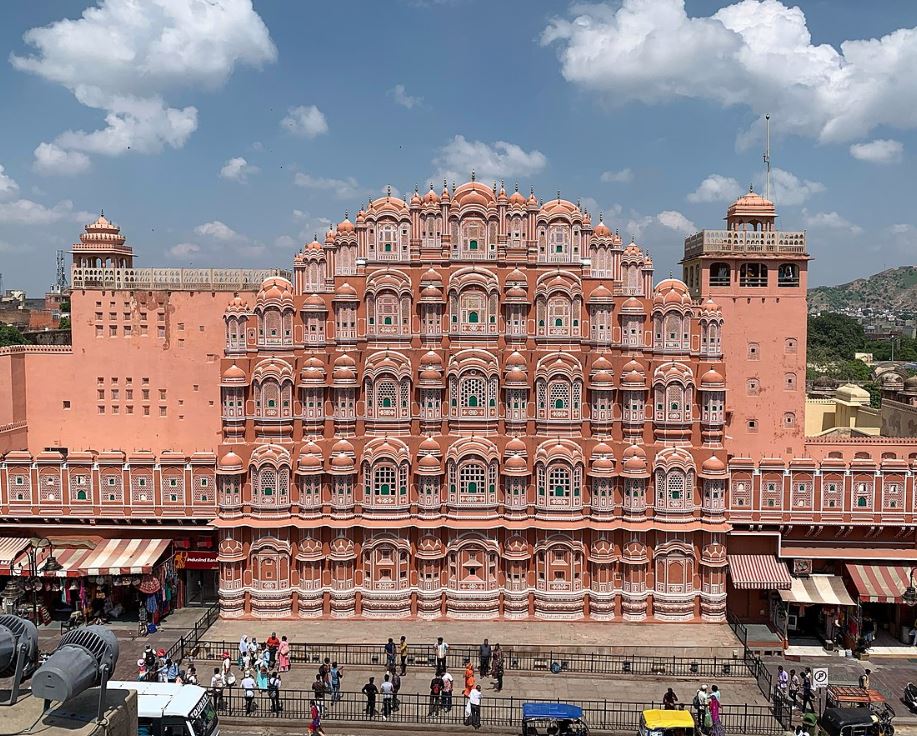
4. Bibi Ka Maqbara
Bibi Ka Maqbara translates to “Tomb of the Lady” and is another famous mausoleum that can be found in the Indian city of Aurangabad. It was commissioned by Mughal emperor Aurangzeb for his wife Dilras Banu Begum, and this is not the only thing that it has in common with the Taj Mahal.
Known locally as the “Dakkhani Taj” or “Taj of the Deccan,” the architectural style of this structure was heavily inspired by its more famous counterpart. Commissioned in 1660 and completed less than a decade later, it was constructed shortly after the Taj Mahal was completed, so this is no surprise.
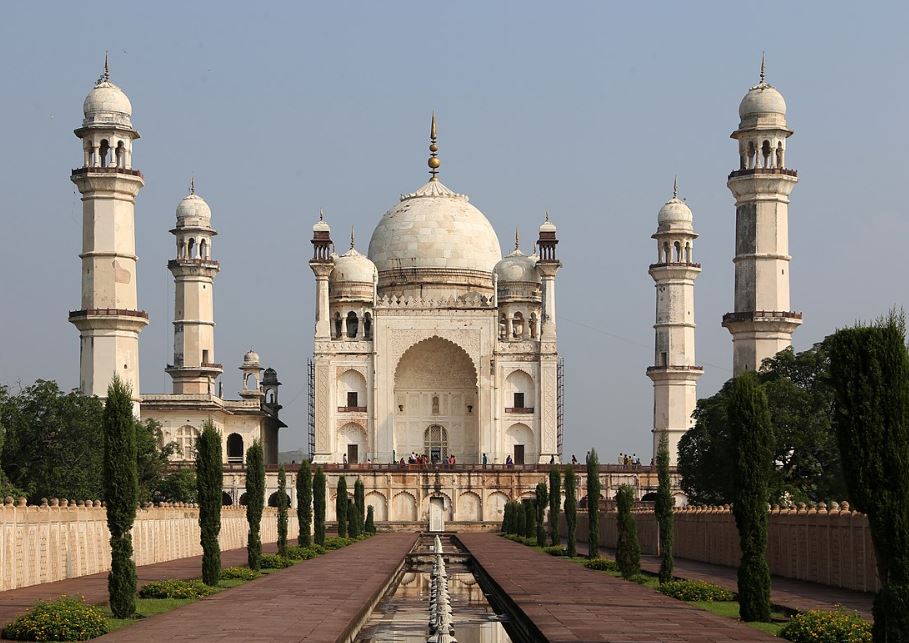
5. Badshahi Mosque
The Badshahi Mosque was the largest construction project of the Mughal emperor Aurangzeb, the man who also constructed “Bibi Ka Maqbara.” It’s located just west of Lahore Fort in the second-most populous city of Pakistan and was constructed between 1671 and 1673.
What’s amazing about this building is that it was the largest mosque in the world between its completion in 1673 and 1986. Today, it remains the largest mosque constructed during the Mughal era and one of Pakistan’s most iconic landmarks. The immense domes and beautiful ornamentation certainly have something to do with this as well.
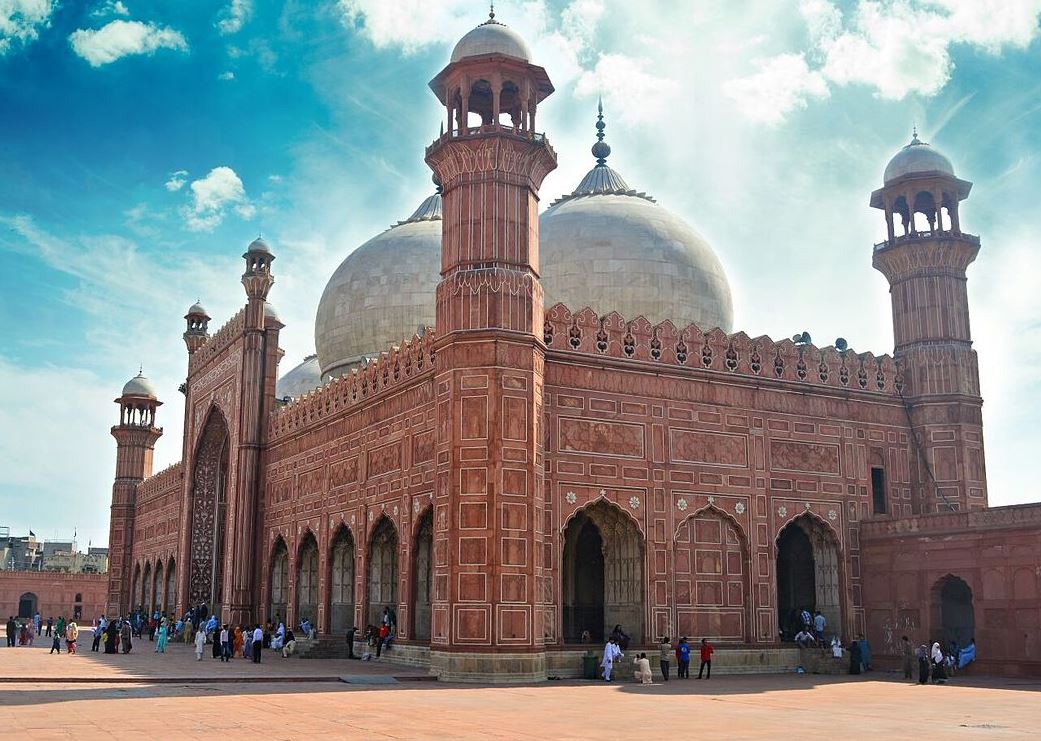
6. Buland Darwaza
Buland Darwaza is a monumental Mughal-era gateway that serves as the main entrance of the Jama Masjid, a huge 1§th-century mosque. It was commissioned by the Mughal Emperor Akbar and completed in 1575. It’s a great example of the Mughal-style gates that were constructed during the Mughal Empire.
This monumental gate was constructed when Mughal Architecture was only just developing following its establishment in the 1520s. This huge monument, therefore, served as the main source of inspiration for other similar gates in the Mughal Empire. It’s huge as well with a height of 40 meters (131.23 feet) and about 54 meters (177.16 feet) from the ground below.
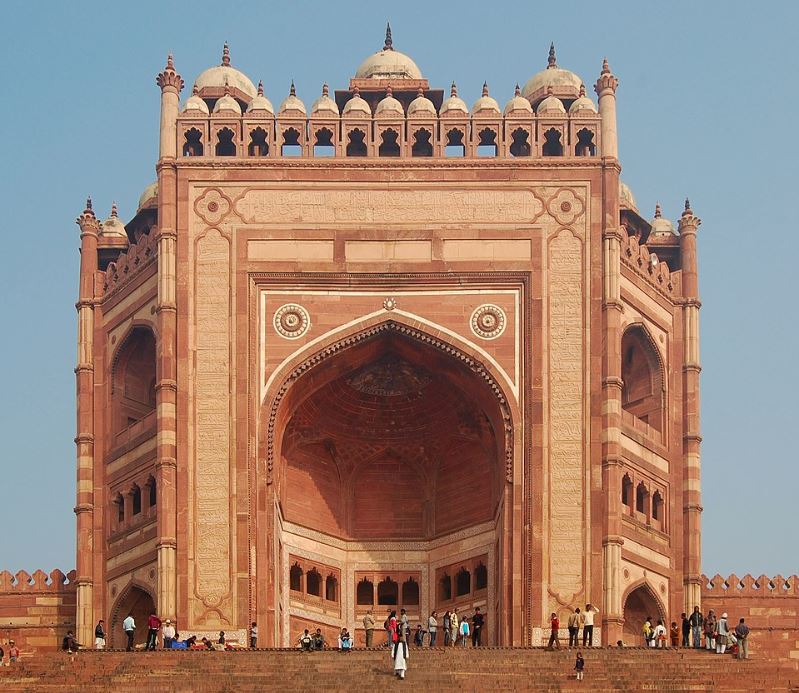
7. Wazir Khan Mosque
The Wazir Khan Mosque was another major construction project completed during the reign of Mughal Emperor Shah Jahan, the man who commissioned the Taj Mahal. It’s located in a densely populated area of Lahore and was constructed between 1634 and 1641, around the time that the Taj Mahal was being constructed as well.
The mosque is considered to be one of the most delicately decorated Mughal-era buildings. It features distinctive kashi-kari tiles and the interior is almost completely covered with beautiful Mughal-style frescoes. These elements transform the entire interior into a magnificent work of art.

8. Tomb of I’timād-ud-Daulah
The Tomb of I’timād-ud-Daulah is a Mughal-era mausoleum in Agra that was completed between 1622 and 1628. It’s sometimes referred to as the “Bachcha Taj” or the “Baby Taj” and that’s because it’s believed that its design inspired the most famous Taj Mahal, a building of which construction started just 3 years later in the same city.
That’s not the only reason why this building is a significant milestone in the development of Mughal Architecture. It was one of the first structures that moved away from the monumental Mughal style defined by the use of red sandstone to the more delicate use of white marble.

9. Humayun’s Tomb
Humayun’s Tomb is a mausoleum in Delhi that is another prime example of the first phase of Mughal Architecture. It was commissioned by the wife of the Mughal Emperor Humayun in the late 1550s and was the first structure of its kind on the Indian subcontinent that incorporated gardens into its overall design.
This amazing building in India was designated a UNESCO World Heritage Site in 1993. It was constructed on an elevated plinth that has a width of 91 meters (299 feet) and the building’s dome reaches a height of 47 meters (154 feet). Many elements in this building were inspired by Persian architecture, including the double dome and high-neck drum.
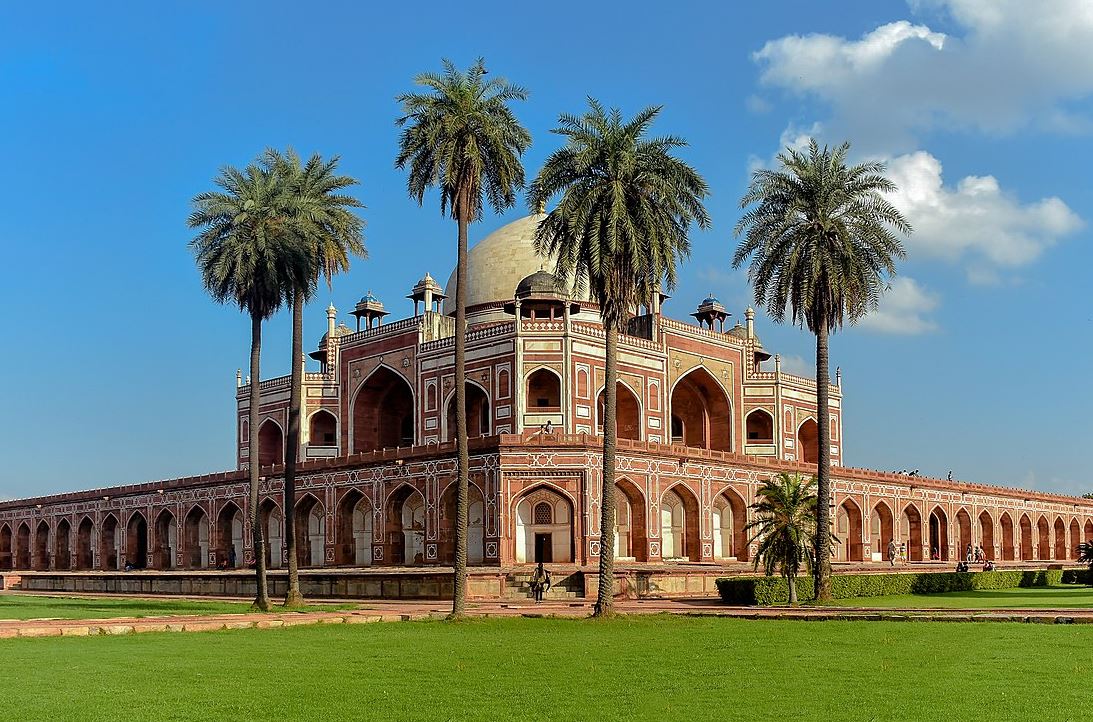
10. Red Fort
The Red Fort was yet another major commission by Emperor Shah Jahan and was commissioned in 1638. This was around the time that he decided to move his capital from Agra to Delhi. He did hore, however, architect Ustad Ahmad Lahori, the same man who designed the Taj Mahal.
The fort was originally red and white and was stripped from most of its marble decorations during a Persian invasion of Nader Shah in 1739. The British subsequently demolished the remaining interior decorations during the Indian Rebellion of 1857. It remains, however, an important Mughal building that served as the main residence of the Mughal Emperors for well over a century.
